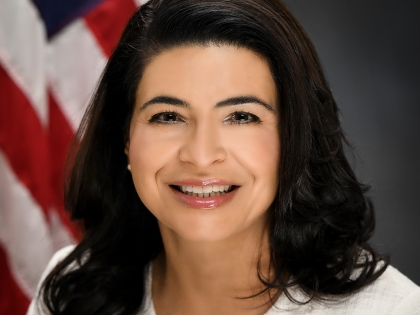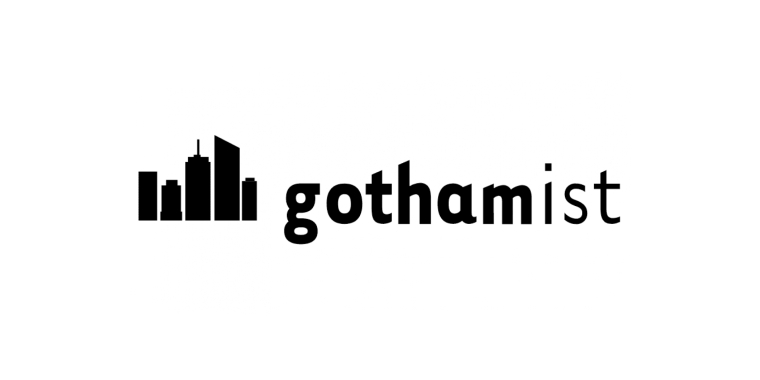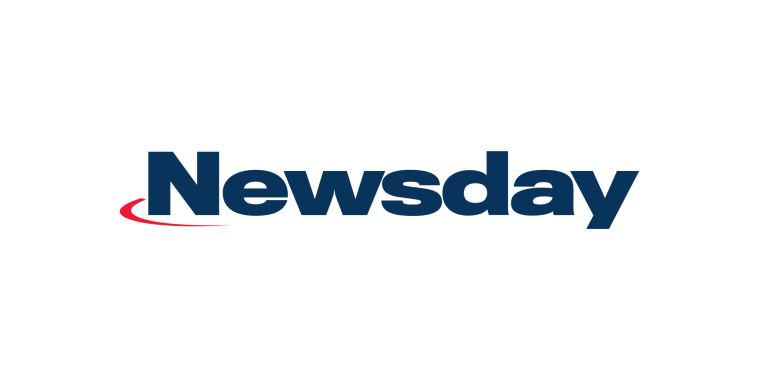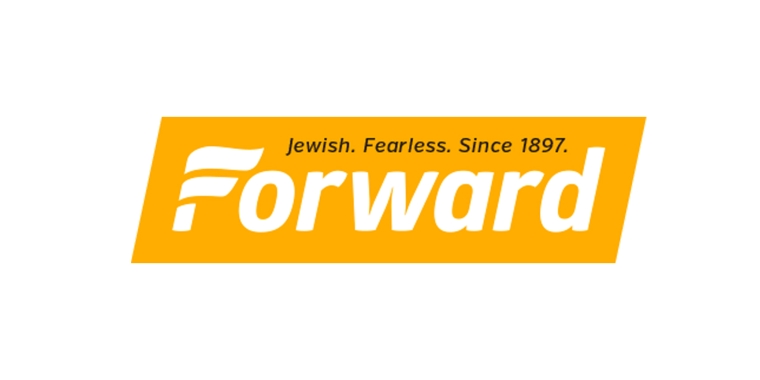
As the Proud Boys move into Long Island, an anti-racism group fights back

Members of the Proud Boys, a far-right group, have marched through the streets of Long Island several times in recent months, waving flags and leaving some residents feeling threatened.
As a Long Island-based anti-racism activist, Nia Adams said she felt a responsibility to respond — but struggles with how she and others can react without further amplifying the group's racist message.
Adams is a member of Justice League NYC, a group of activists who make it their mission to confront racism in our region. Lately, the Proud Boys' arrival in Long Island, coupled with extremism, racist acts and violence across the state, have made their work both more urgent, and more difficult, she said. The Proud Boys are planning their next demonstration in Rochester in August, called the Reawaken America Tour less than an hour away from the site of the Buffalo supermarket massacre.
“We want to address the issue, but we also know that the Proud Boys want visibility, they want fuel on the fire,” said Adams, who noted that the Proud Boys’ march through Rockville Centre was so brazen it was “like it was a Fourth of July parade.”
She added: “This is the second one that they've done this year in close proximity to a variety of communities of color.”
As one of the most segregated communities in the country, experts say Long Island is a prime target for right-wing, white supremacist hate group movements like the Proud Boys. Adams and other activists look for ways to encourage law enforcement and leaders to stand up to intimidating tactics and speak up for people in groups that might feel threatened.
Adams was already a community organizer when she got involved with the Justice League – a New York-based branch of The Gathering for Justice, a national group founded by the singer and civil rights leader Harry Belafonte aimed at eliminating racial inequities in the justice system. Adams found the group when she worked to draw attention to Akbar Rogers, a Black man who was beaten by police in Freeport.
But, in many ways, addressing the problem of the Proud Boys, and groups like it, is far less straightforward than responding to the violence committed by police. Adams noted that the Proud Boys often claim that they are the victims of anti-white racism, and they quickly point to any push-back on their message as discrimination against them.
“They're pivoting their language around equality, ending racial hate, and patriotism, and they’re using the term ‘anti racism,’ but what they mean is racism against white folks,” said Adams.
On the Proud Boys Long Island’s substack, a newsletter describes their May 21 demonstrations in Long Island as a “display of patriotism and love for … country” to “spread cheer and goodwill in these communities that we love,” claiming that they were welcomed with open arms. A spokesperson for Substack did not immediately respond to questions about the Proud Boys’ use of its platform, but the company’s terms of use state that “Substack cannot be used to publish content or fund initiatives that incite violence based on protected classes.”
The Proud Boys are among the 1,221 active hate and anti-government extremist groups that the Southern Poverty Law Center has documented as of 2021. In recent years, far right extremist groups like them have sprouted in states around the country, galvanized by the polarization surrounding the Trump administration, the COVID-19 pandemic and the 2020 insurrection attempt. They are organized and — despite being labeled an extremist group by the FBI, and the fact that their leaders were recently charged with sedition — they are allowed to demonstrate like any other group.
A three year investigation by Newsday found that housing in Long Island is among the most segregated in the nation and showed discrimination by realtors on Long Island against people of color, with white people being shown neighborhoods with higher proportions of white residents than Black people were, while Black people were shown homes in more integrated neighborhoods.
During the 2020 racial justice protests, the effects of this segregation were brought into stark focus when residents of Merrick – a town that is more than 90% white according to the latest census – tried to block 100 Black Lives Matter protesters from marching down one of the town’s main streets. The residents specifically demanded that the protestors “Go West!” to the neighboring and more diverse Village of Freeport.
Myles Hollingsworth, an 18-year-old activist from Long Island’s south shore who has worked with both the Gathering for Justice and the Justice League groups, said there are historical reasons why the Proud Boys have chosen Long Island for their rallies.
“The Proud Boys have always been here, white supremacy has always been here, but now they have been empowered to stand up and speak their minds to the people of Long Island,” said Hollingsworth. “Long Island is a safe haven for them because of the segregation and the political, social and economic ties that they have here.”
But Nathan Stange, a six-year resident of Long Island’s Rockville Centre, said rather than growing from established roots in the communities of Long Island, the Proud Boys are actually more of an invasive species.
“I think there is an open question concerning how much of a true local organic presence they actually have,” said Stange. “Because, while I know there is a history of white supremacy in Long Island, until the emergence of the Proud Boys, there hasn't been organized, public, white supremacists rallying that I've encountered.”
At a recent Rockville Centre Village Board meeting, residents and politicians discussed the May 21st demonstration and Mayor Francis Murray was in attendance. Stange, who has also worked as a facilitator for the Anti-Racism Project based in Rockville Centre, said Murray confirmed that the men who marched were not from the area.
In addition, residents who attended the Proud Boys rally on May 2nd, and wish to remain nameless for fear of retaliation, captured photos of license plates from nearby states like New Jersey, Connecticut, and Pennsylvania.
According to the New York Times, since going mute after the January 6th attack, the Proud boys, and groups like them, are bringing their message from the national stage down to a local level, with members frequently traveling to different states and demonstrating in small communities around the country.
“The Proud Boys are planting a flag and drawing these elements from around the region,” said Stange. “And This is not unique to Long Island, this is happening all over the United States.”
For example, when 31 members of the Patriot Front were detained in Coeur d'Alene, Idaho, in an attempt to stage a riot at a local PRIDE event, it was later discovered that only two of the group were actually from the state.
Adams and her fellow organizers suggested a strategy to address this: Push trusted community leaders who are concerned about the Proud Boys’ racist message to publicly discuss those concerns and support policies that promote racial equity.
“What would it look like to call on white people to talk to other white people about some of this harm that's being done in communities of color and how this hate is being spread?” asked Carmen Perez-Jordan, president and CEO of Gathering of Justice. “We also need leaders to step up, engage with their fellows, and do something."
At their June 6th meeting, members of Justice League NYC also discussed the importance of confronting the Proud Boys online, where much of their activity and recruitment takes place.
I’m calling this shameful display out for what it is: Nothing more than a modern-day Klan march happening in our community.
State Sen. Anna Kaplan
Rameen Aminzadeh, a Justice League activist, organizer, and founder of Beats, Rhymes & Relief – an arts-focused non-profit organization for humanitarian relief – suggested a social media campaign that puts pressure on public officials to stand against white supremacy publicly. The idea would be to highlight public figures and politicians who have promised to address hate, and contrast them against the messages of groups like the Proud Boys.
“It puts our allies in the hot seat, forcing them to act while calling out the egregious remarks and actions that the Proud Boys have committed,” said Aminzadeh.
In recent weeks, Adams and Justice League NYC have drafted a letter calling out the Proud Boys as a hate group. They will gather signatures, and then bring those petitions to Long Island, New York City and state lawmakers to show that they have broad-based support when they ask for concrete action.
“Like their predecessors in white hoods, these men cover their faces with balaclavas to conceal their identities,” the letter says.
State Sen. Anna Kaplan, is one of several lawmakers taking the kind of action that Adams and the Justice League are urging. She publicly condemned the Proud Boys recent marches, saying in a statement
“I’m calling this shameful display out for what it is: Nothing more than a modern-day Klan march happening in our community.”
Such statements help prevent the extremist behavior from becoming normal and accepted to community members, activists said.
“We need to confront the menace of these dangerous extremists with unity and strength,” said Kaplan.
And while Adams admits that the work she and the Justice League are doing is daunting, she will not allow herself to give up.
“If our mothers and grandmothers had given up we wouldn't have gotten even this far. So, it's my duty, it's our duty, to fight and to win and I truly believe that we will.”



